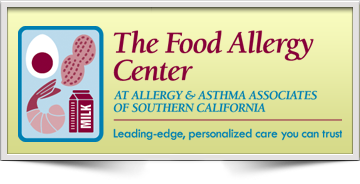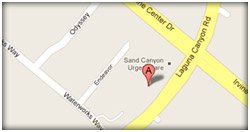You have presented to our office for the diagnosis and management of chronic cough. To help you understand the problem we would like you to become familiar with the information contained in this handout.
A cough is a natural reflex. It is the lung's way of clearing itself from something that is interpreted by the lung as being irritating. We have no conscious control over our reflexes. For example, if you put your hand on a hot stove you automatically pull it away. This is an example of the body's response to pain and is an automatic reflex. The lung cannot "pull itself away," and therefore it expels air at rapid rates in order to get rid of the substance it perceives as being irritating. At times there is actually no irritating substance. The reflex itself can become "hyperactive." At other times the irritating substance is not obvious. During these times the cough becomes chronic and the patient seeks help.
Listed below are the most common causes of cough.
1. Upper respiratory tract problems
The most common of these is sinusitis. Cough can also be produced by other upper respiratory tract problems such as nasal polyps, chronic postnasal drip, and other more rare causes.
2. Asthma
Although asthma oftentimes presents as a wheeze, it can present as a cough as well. Asthma is an illness involving the bronchial tubes of the lung. They squeeze down, fill up with mucus, and swell on the inside.
3. Bronchitis
Bronchitis differs from asthma. Although it is a disease of the bronchial tubes there is less squeezing down of these tubes. The tubes usually produce excess mucus. Bronchitis can be divided into chronic and acute forms. In the chronic form the patient has had the disease for at least two years and has experienced excess mucus production with cough for at least three successive months during these years. Acute bronchitis can also produce a prolonged cough. In such cases there may be less mucus production. One of the most frequent causes of acute bronchitis is an upper respiratory tract infection or "cold." Oftentimes, after a cold the protective lining of the bronchial tubes is damaged. Thus the patient's cough reflex is "unprotected" and a cough occurs due to exposure to things which are normally not perceived as irritating. This is one of the most common causes of cough seen in our practice. It is called post-viral bronchitis. It was given this name because it follows a viral respiratory tract infection or cold. It may last for several months – until the damaged lining repairs itself.
4. Esophageal reflux
In some patients stomach acid goes up the esophagus (swallowing tube) and produces "heartburn" which irritates the cough reflex. In some instances the patient actually does not know that they have reflux.
5. Bronchiectasis
This cause of cough is not commonly seen in our practice. It is produced by an abnormal dilatation (swelling) of the bronchial tubes. Because the bronchial tubes swell, mucus pools inside them, and to get the mucus up the patient coughs. The patient produces copious amounts of sputum in this disorder.
6. Miscellaneous causes
There are many miscellaneous causes. These include drugs that the patient takes (usually these are drugs used to treat high blood pressure), heart failure and others.
To evaluate your cough we will normally do the following on the first visit:
a. A total eosinophil count: This is a blood study which searches for cells associated with asthma. We obtain the blood by sticking your finger.
b. Chest x-ray: This will be done if you have not had a recent chest x-ray.
c. Sinus x-ray: This will be done if you have not had a recent sinus x-ray.
d. Pulmonary function studies: This is a breathing test where we measure your breathing capacity.
e. Allergy skin tests: These are done because allergies can be a contributing factor to some of the causes of cough noted above.
In the majority of cases a tentative diagnosis can be made on the basis of the above studies which are usually performed at the time of the first visit. In some cases a definite diagnosis can be made. However in other instances the diagnosis is not apparent after the above studies are done. In these cases we will place you on a treatment program based upon our best estimate as to what the diagnosis is. If you respond to this treatment program no further studies need be performed. If there is no response to this treatment program other studies are usually done or an alternative treatment program is initiated to see if there is a response before these studies are done.
If no treatment response is obtained, the other studies usually include the following:
a. Methacholine inhalation challenge: This is a pulmonary function study (breathing test) where we have you inhale a substance which helps us make a diagnosis of asthma.
b. Gastrointestinal x-rays and perhaps pH monitoring in the esophagus: These are studies used to make a diagnosis of gastroesophageal reflux. Sometimes we will not do these studies but simply treat you for esophageal reflux to see if such treatment helps.
c. CT Scans of the sinus: This is similar to an x-ray, but is much more "accurate."
d. Bronchoscopy: This is done if other studies fail to find a cause for the cough and the patient has not responded to treatment. This study is done by a pulmonologist. You would be referred to a pulmonologist to perform this study. In this study a small light is placed into the bronchial tubes to see if something is causing the cough that has not been detected on previous studies.








